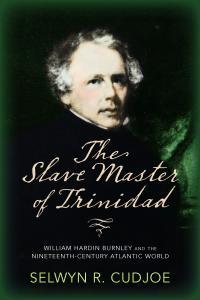Origin of Indian indentureship in Trinidad
By Dr Selwyn R. Cudjoe
June 06, 2022
On the celebration of Indian Arrival Day, May 31, an Express editorial recounted: "On this day 177 years ago the Fatel Razack entered the Gulf of Paria with over 200 Indians aboard, the first of 143,939 citizens of India to be brought here under a British scheme to deal with a shortage of labour following the emancipation of enslaved Africans in 1834–38."
On same day the Express made its claims, the Centre for Reparations Research (UWI) and the Indo-Caribbean Cultural Centre (ICC), in their call to attend a Zoom meeting on Indian reparations, offered a slightly different reason for Indian indentureship: "The Indian indenture system was a scheme of bonded servitude in which more than one million Indians were transported to labour in European colonies, as a substitute for slave labour, following the abolition of slavery in the early 19th century."
While most elements of these statements are true, the rationale offered by the Express editorial and the ICC for the bringing of Indians to Trinidad and Guyana (formerly British Guiana) is not entirely correct. Indians were brought to these British territories to undercut the wages that enslaved people were expected to make once apprenticeship ended.
What is the origin of Indian indentureship to Guyana and Trinidad in 1838 and 1845, respectively?
On January 4, 1836, John Gladstone, an absentee sugar estate owner in Guyana and father of William Gladstone, future prime minister of England (1868–1894), wrote the following letter to Gillanders Arbuthnot and Company, a Kolkata shipping agency:
"You will probably be aware that we are very particularly situated with our negro apprentices in the West Indies, and that it is [a] matter of doubt and uncertainty, how far they may be induced to continue their services on the plantations after their apprenticeship expired in 1840... We are, therefore, most desirous to obtain and introduce labourers from other quarters, and particularly from climates similar in their nature." (John Scoble, Hill Coolies: A Brief Exposure, 1840).
Gladstone was fearful of the "dangerous monopoly" that black workers would have when apprenticeship ended. He emphasised: "It is of great importance to us to endeavour to provide a portion of other labourers, whom we might use as a set-off, and, when the time for it comes, make us, as far as possible, independent of our negro population; and it has occurred to us that a moderate number of Bengalese, such as you were sending to the Isle of France [Mauritius]... might be suitable for our purposes." (Gladstone’s italics.)
In 1835, William Burnley, the biggest slaveholder in Trinidad, was questioned by William Gladstone at a House of Commons Select Committee about how he intended to make apprenticeship work for him. He calmly and dispassionately explained to Gladstone: "I very naturally and anxiously turned my attention to the means by which we should be enabled to cultivate our estates when that period ended." Burnley had corresponded with William Gladstone previously.
John Gladstone then ordered from Gillanders Arbuthnot and Company 100 "young active, able-bodied people... to be bound to labour for a period not less than five years, or more than seven years, the wages not to exceed four dollars per month". It informed Gladstone it had already sent 200 Indians to Mauritius to work on plantations there, thus "there would not be any greater difficulty of sending Indian men to the West Indies".
This was the origin of Indian indentureship in the West Indies or the "Coolie Slave Trade", as John Scoble, an English anti-slavery leader, called it in 1840. It was meant to be used as "a set-off" or repulsion against the enslaved Africans when they became formally free.
In spite of the Trinidad planters’ rhetoric, production did not drop as dramatically as the planters expected; sugar production had declined from 19,837 hogshead in 1838 to 17,470 hogshead in 1839; molasses had increased from 2,337 barrels to 3,144 barrels in 1839; while cocoa had decreased from 2,294,936 pounds in 1838 to 2,282,108 pounds in 1839.
In fact, things had gone so well in 1839 that the Trinidad Standard could argue that while a turbulent future lay ahead for the colony after apprenticeship, "the labourers were not likely to disturb the order of society in their mode of enjoyment of the recent boom which had been conferred on them in that there was much, and perhaps more, safety for life and respect for property, than previous to emancipation". (January 3, 1840.)
While indentureship was the policy of the British government, the scheme itself was carried out by individuals or companies that were owned by powerful men. These men always acted in their own best self-interest. They realised that emancipation was coming and the ex-slaves were not going to remain perpetual slaves on their plantations.
Once apprenticeship ended and the ex-slaves bargained for higher wages, the cost of labour increased, and these powerful slave owners such as Gladstone and Burnley had to find a cheaper source of labour. Of the 1,938 Indians who came to the island between May 30, 1845, and May 2, 1846, 90 settled on Burnley’s estates in Cedar Hill, Union Hall, Phoenix Park and Esperanza. Burnley had first suggested using Indian indentures in the island years earlier.
Slavery and indentureship were economic systems which responded to the laws of supply and demand and running their operations at the lowest cost. As far as these sugar owners were concerned, the emancipation of enslaved Africans meant an increase in their expenses and they acted accordingly.
Indians were brought to these lands to decrease the cost of sugar production after apprenticeship, and this is the point from which we ought to see their entrance into Trinidad and Tobago.
Prof Cudjoe's e-mail address is scudjoe@wellesley.edu. He can be reached @ProfessorCudjoe
Share your views here...

The Slave Master of Trinidad by Dr. Selwyn R. Cudjoe
|

